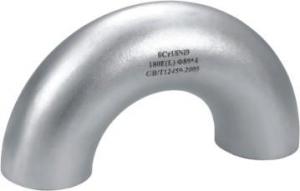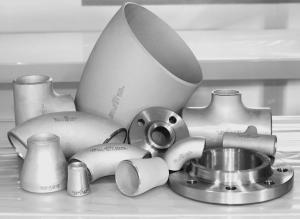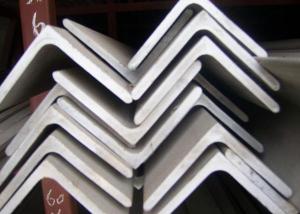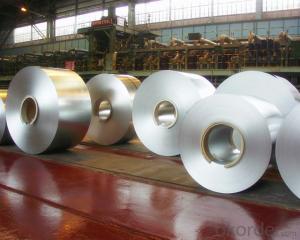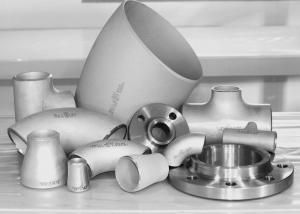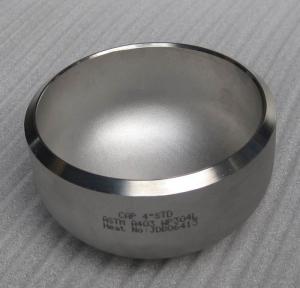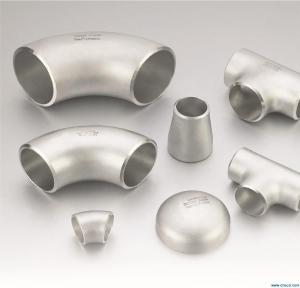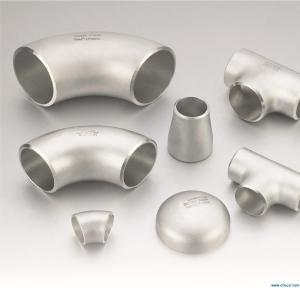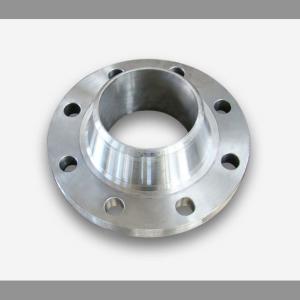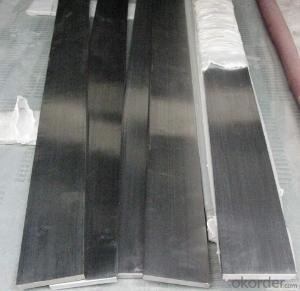Stainless Steel Cross
- Loading Port:
- China Main Port
- Payment Terms:
- TT or LC
- Min Order Qty:
- 5 Pieces pc
- Supply Capability:
- 10000 Pieces Per Month pc/month
OKorder Service Pledge
OKorder Financial Service
You Might Also Like
Stainless Steel Fittings
Specifications Features:
1) Carbon steel fitting and stainless steel fitting
2) Standard: ASME, ANSI, API, JIS
1. BUTT WELDED FITTING:
2. Production acc. to the standard of GB /ASTM / ASME / DIN / JIS
ASTM B 16.9 /16.11 B 16.28 JIS B 2311/2220 DIN2617/2616/2615/2391
3. Types: Elbows, seamless and welded, LR & SR ,Bend -Equal and reducing Tees,
seamless and welded - Concentric and eccentric Reducers,seamless and welded -Caps
4. Wall thickness: From Sch5 up to Sch160/STD/XS/XXS
5. Material Grades: A403,WP304, WP304L, Wp316, WP316L, A234WPB
6. Dimensions: Seamless: from 1/2' up to 24'
7. size: From 1/2" up to 72"
Outer packing:Seaworthy plywood case
|
Grade |
TP304,TP304L,TP321,TP316L,TP310S etc. |
|
connection |
welding |
|
techniques |
forged |
|
Surface finishing |
180/240/320/400 grit |

- Q:Can stainless steel flats be welded?
- Yes, stainless steel flats can be welded. Stainless steel is a common material used in various industries, and its weldability is one of its notable characteristics. Welding stainless steel flats requires proper technique and equipment to ensure a strong and durable weld. The process typically involves using a filler metal that matches the composition of the stainless steel being welded. It is important to clean and prepare the surfaces to be welded, as stainless steel can be susceptible to contamination and oxidation. With the right procedures and expertise, stainless steel flats can be effectively welded to create various structures and components.
- Q:Are stainless steel flats resistant to UV rays?
- Stainless steel flats are typically able to withstand UV rays. The corrosion resistance of stainless steel is well-known and this extends to its ability to resist the harmful impact of UV rays. Many materials can experience discoloration, fading, and deterioration due to UV rays, but stainless steel is highly resistant to these consequences. This is due to the presence of chromium in stainless steel, which creates a protective oxide layer on its surface that prevents UV rays from penetrating and causing harm. As a result, stainless steel flats can be utilized in outdoor settings and areas that are exposed to sunlight for extended periods of time without experiencing significant deterioration or performance loss.
- Q:What is the average price of stainless steel flats?
- The average price of stainless steel flats can vary depending on various factors such as the grade and thickness of the steel, market demand, and location. However, as of [current year], the average price range for stainless steel flats is approximately $3 to $10 per pound. It is important to note that this is a general estimate and prices may fluctuate based on market conditions and individual suppliers. It is recommended to consult with local suppliers or check online platforms for the most up-to-date pricing information.
- Q:How is the thickness of stainless steel flats measured?
- The thickness of stainless steel flats is typically measured using a tool called a micrometer. A micrometer is a precision measuring instrument that provides accurate and precise measurements of small distances. To measure the thickness of stainless steel flats, the micrometer is placed perpendicular to the surface of the flat and the jaws are gently tightened until they make contact with the material. The reading on the micrometer scale indicates the thickness of the stainless steel flat in millimeters or inches, depending on the unit of measurement chosen. This measuring process ensures that the thickness of stainless steel flats is accurately determined for various applications in industries such as construction, manufacturing, and engineering.
- Q:What is the thickness range of stainless steel flats?
- Depending on the specific type and grade of stainless steel, the thickness of stainless steel flats can vary. These flats can range in thickness from 0.5mm to over 100mm, depending on their intended usage and desired mechanical properties. To determine the suitable thickness range for a specific application, it is crucial to refer to the relevant standards and specifications for the chosen stainless steel grade.
- Q:Can stainless steel flats be painted or coated?
- Stainless steel flats have the capability to be painted or coated, although it should be noted that stainless steel naturally resists corrosion and staining, rendering the need for painting or coating unnecessary for these purposes. Moreover, the smooth and non-porous surface of stainless steel can present challenges with regards to the adherence of paint or coatings. Nevertheless, if there exists a specific rationale or preference to paint or coat stainless steel flats, it is indeed feasible. In order to ensure proper adhesion and durability, the stainless steel surface must be thoroughly cleaned and prepared, and a suitable primer or coating specifically designed for stainless steel should be utilized. It is also advisable to seek guidance from professionals or manufacturers to determine the most suitable and effective approach for painting or coating stainless steel flats.
- Q:Can stainless steel flats be used in the pulp and paper industry?
- Certainly, the pulp and paper industry can certainly make use of stainless steel flats. Stainless steel is renowned for its exceptional ability to resist corrosion, rendering it a highly suitable material for industries that involve exposure to chemicals and moisture, like the pulp and paper industry. Furthermore, stainless steel flats possess commendable strength and durability, making them well-suited for bearing heavy loads and enduring the industry's demanding conditions. Stainless steel flats can find application in various aspects of the pulp and paper industry, encompassing but not limited to conveyor systems, machinery components, storage tanks, and process equipment. Ultimately, stainless steel flats prove to be a dependable and adaptable choice for the pulp and paper industry due to their corrosion resistance, strength, and durability.
- Q:Are stainless steel flats resistant to solvents?
- In general, solvents do not easily affect stainless steel flats due to their resistance. Stainless steel is renowned for its remarkable ability to resist corrosion, making it a suitable choice for numerous applications that involve exposure to solvents. The protective layer formed by the chromium component in stainless steel acts as a barrier, preventing solvents from infiltrating and causing harm. Nevertheless, it is crucial to take into account the type of solvent being utilized and its concentration, as some aggressive solvents or exceedingly high concentrations may still pose a risk of deteriorating stainless steel gradually.
- Q:How do I calculate the weight of a stainless steel flat?
- To calculate the weight of a stainless steel flat, you will need to know the dimensions of the flat and the density of the stainless steel. First, measure the length, width, and thickness of the stainless steel flat in either inches or millimeters. Make sure to record the measurements accurately. Next, find the density of stainless steel. The density of stainless steel can vary depending on the grade, but a commonly used value is 7.9 grams per cubic centimeter (g/cm³) or 0.289 pounds per cubic inch (lb/in³). To calculate the weight, use the following formula: Weight (in grams) = Length (in cm) x Width (in cm) x Thickness (in cm) x Density (in g/cm³) or Weight (in pounds) = Length (in inches) x Width (in inches) x Thickness (in inches) x Density (in lb/in³) Plug in the measured values into the formula and multiply them together. The resulting value will give you the weight of the stainless steel flat in either grams or pounds, depending on the unit of density used. Keep in mind that this calculation provides an estimate of the weight, and the actual weight may vary slightly due to manufacturing tolerances or variations in the density of the stainless steel.
- Q:What are the different grades of stainless steel flats?
- Stainless steel flats, also known as stainless steel bars or stainless steel profiles, come in a variety of grades that have different chemical compositions and properties. The most common grades of stainless steel flats are: 1. Grade 304: This is the most widely used and versatile grade of stainless steel. It contains 18% chromium and 8% nickel, offering excellent corrosion resistance, good formability, and high strength. Grade 304 stainless steel flats are commonly used in food processing equipment, kitchen appliances, and architectural applications. 2. Grade 316: This grade is similar to Grade 304 but with the addition of 2-3% molybdenum, which enhances its corrosion resistance, especially against chlorides and acids. Grade 316 stainless steel flats are commonly used in marine environments, chemical processing plants, and coastal structures. 3. Grade 430: This grade is a ferritic stainless steel with 17% chromium. It has lower corrosion resistance compared to Grades 304 and 316, but it offers good heat and oxidation resistance. Grade 430 stainless steel flats are often used in decorative applications, automotive trim, and indoor appliances. 4. Grade 410: This is a martensitic stainless steel with 11.5% chromium. It is magnetic and has excellent hardness, strength, and wear resistance. Grade 410 stainless steel flats are commonly used in cutlery, blades, and mechanical components requiring high strength and corrosion resistance. 5. Grade 201: This is a low-nickel stainless steel with around 16-18% chromium. It offers good formability and corrosion resistance, but not as much as Grades 304 and 316. Grade 201 stainless steel flats are commonly used in decorative applications, cookware, and some appliances. It's important to choose the appropriate grade of stainless steel flats based on the specific application requirements, considering factors such as corrosion resistance, strength, formability, and cost. Consulting with a stainless steel supplier or a materials engineer can help in making the best choice for your needs.
1. Manufacturer Overview |
|
|---|---|
| Location | Zhejiang, China |
| Year Established | 2010 |
| Annual Output Value | above US$16 million |
| Main Markets | East Asia, Middle East. |
| Company Certifications | |
2. Manufacturer Certificates |
|
|---|---|
| a) Certification Name | |
| Range | |
| Reference | |
| Validity Period | |
3. Manufacturer Capability |
|
|---|---|
| a)Trade Capacity | |
| Nearest Port | Shanghai |
| Export Percentage | |
| No.of Employees in Trade Department | above 10 people |
| Language Spoken: | English, Chinese |
| b)Factory Information | |
| Factory Size: | about 30000 square meter |
| No. of Production Lines | above 7 |
| Contract Manufacturing | OEM Service Offered |
| Product Price Range | Average |
Send your message to us
Stainless Steel Cross
- Loading Port:
- China Main Port
- Payment Terms:
- TT or LC
- Min Order Qty:
- 5 Pieces pc
- Supply Capability:
- 10000 Pieces Per Month pc/month
OKorder Service Pledge
OKorder Financial Service
Similar products
New products
Hot products
Related keywords
